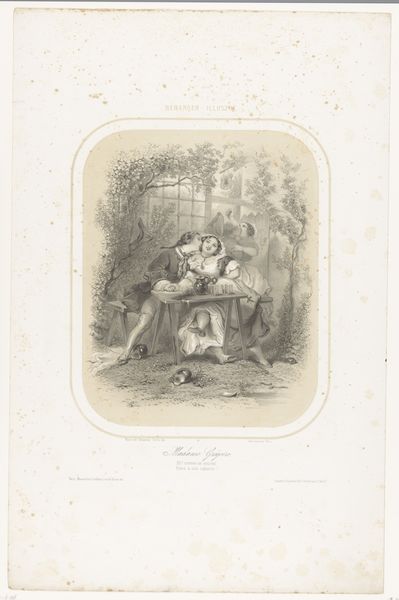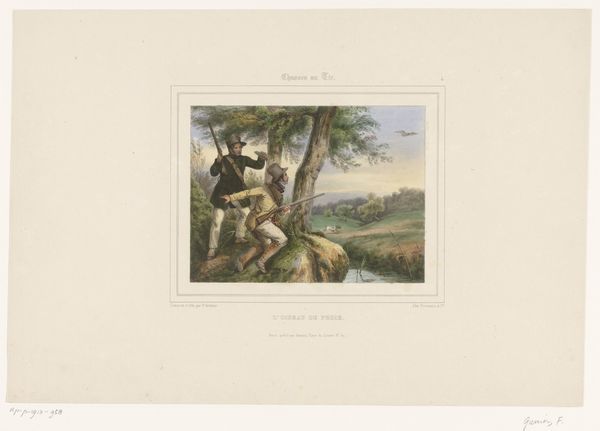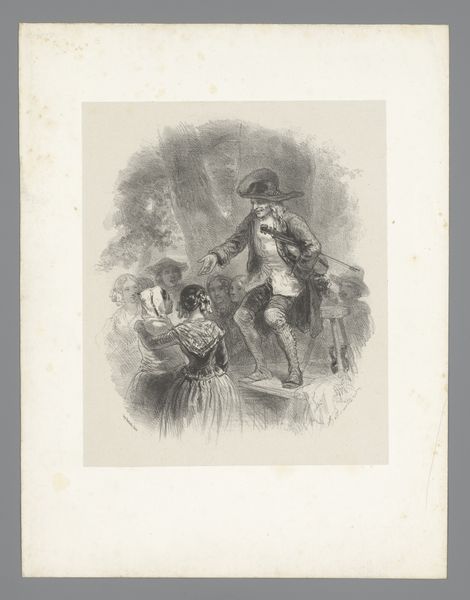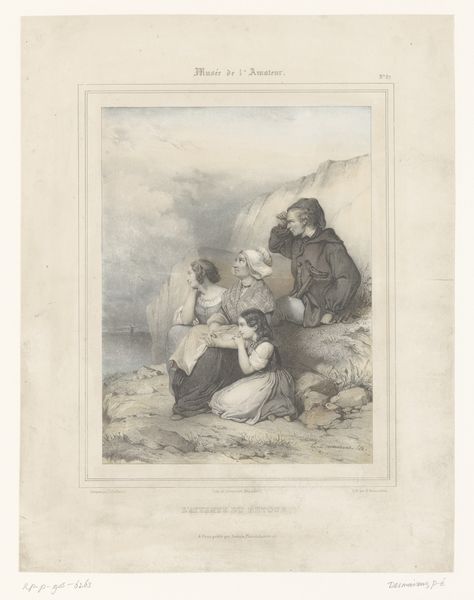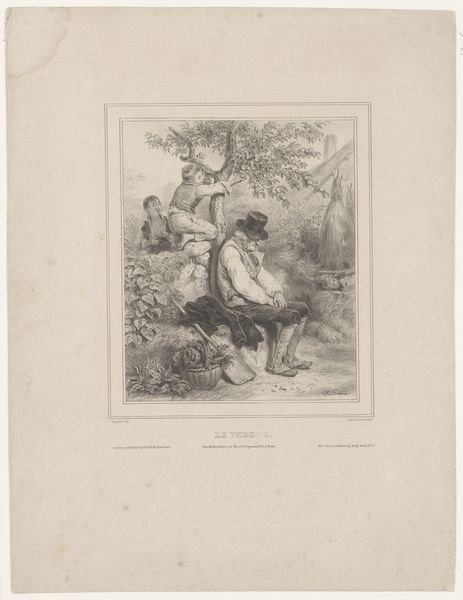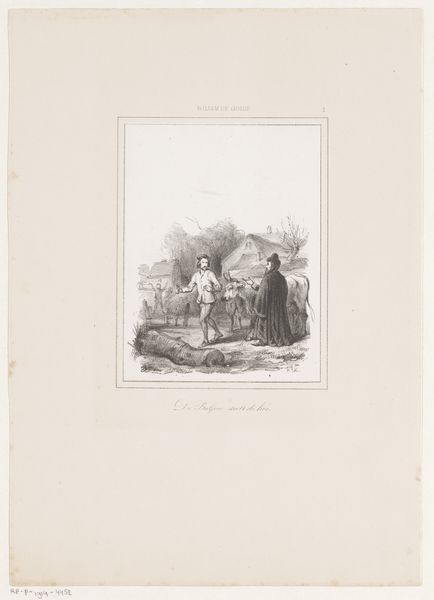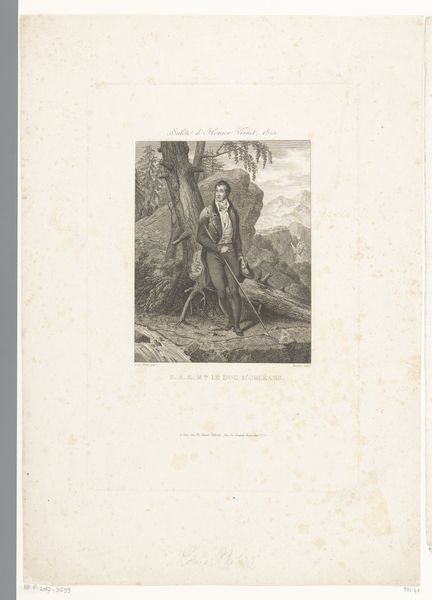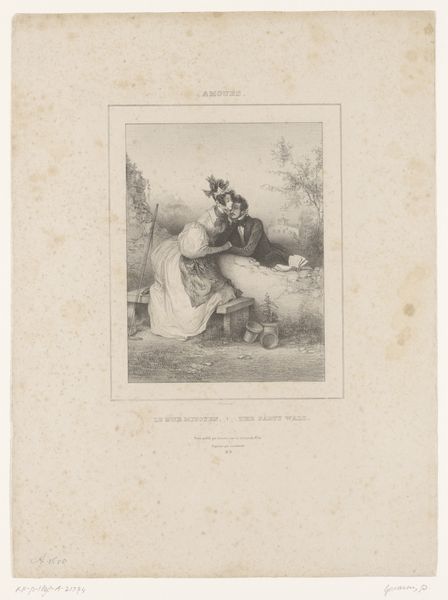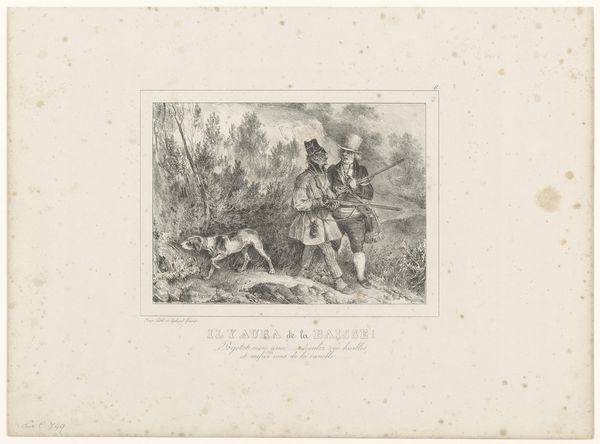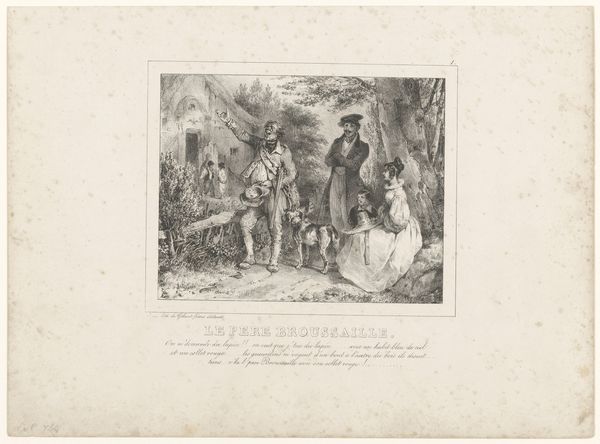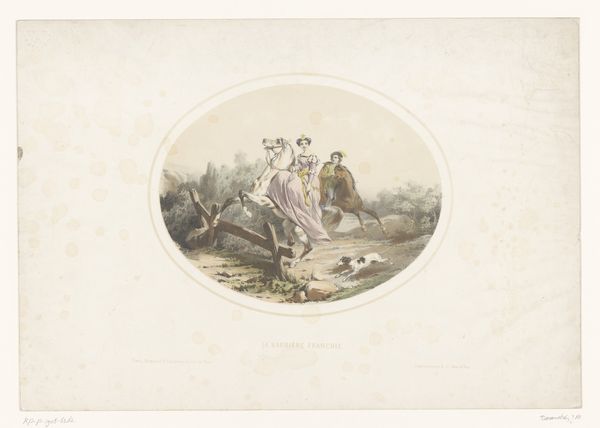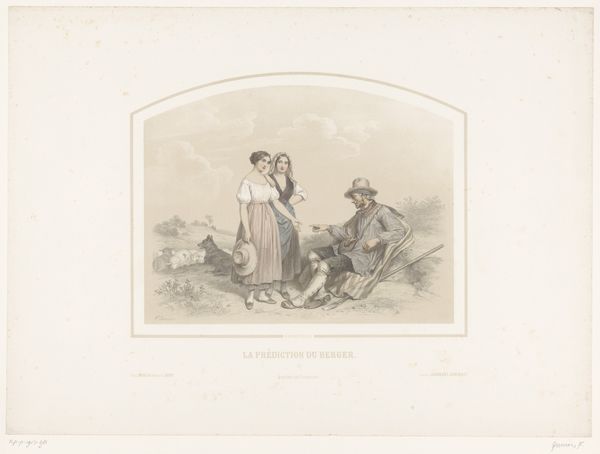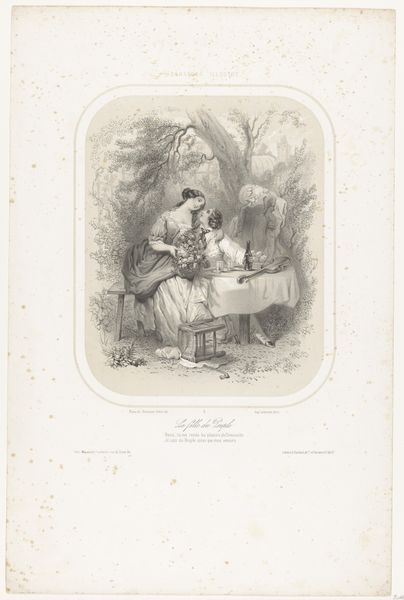
print, engraving
#
portrait
#
aged paper
#
light pencil work
#
narrative-art
#
yellowing background
# print
#
light coloured
#
colourisation
#
old engraving style
#
figuration
#
romanticism
#
genre-painting
#
engraving
Dimensions: height 325 mm, width 244 mm
Copyright: Rijks Museum: Open Domain
Curator: This is "Soldier Giving Money to a Poor Woman" by Hippolyte Bellangé, created in 1829. It’s an engraving and it definitely shows its age, but something about the sentiment seems so classic. What catches your eye? Editor: I’m struck by the contrast between the soldier's uniform and the ragged clothes of the women. It speaks to a very specific social and economic divide of the time. What do you see in terms of its social implications? Curator: For me, it's all about production. Look at the *means* by which this image was made: engraving. This wasn’t a quick sketch; it involved skilled labor, metal plates, specialized tools. And consider its purpose: prints like these were made for wider consumption, intended to circulate ideas about charity, class, and even patriotism. How was the creation and distribution of art like this serving power structures? Editor: That's a great point! So, the *production* of this image, through the medium of engraving, directly connects to how those social divisions were maintained and commented on. But do you think it critiques it? I can’t tell if it's celebrating or just showing it... Curator: That ambiguity is crucial. Was this intended as straightforward propaganda? Probably not. It raises more questions about how wealth and labor were distributed in post-Revolutionary France. The very materiality – the paper, the ink, the etched lines – carries a weight of cultural significance. Editor: So by looking at the printmaking process, the materials used, and its potential distribution, we get a sense of its complex position within society and the social classes of the time? Curator: Precisely. We're shifting the focus from the supposed ‘genius’ of the artist to the social network that enabled its creation, distribution and ultimate meaning. Editor: That’s given me so much to think about, it reframes the soldier from a romantic figure into a cog within that broader system of labor and capital! Thanks! Curator: My pleasure, it’s amazing how material analysis unlocks new understandings!
Comments
No comments
Be the first to comment and join the conversation on the ultimate creative platform.
